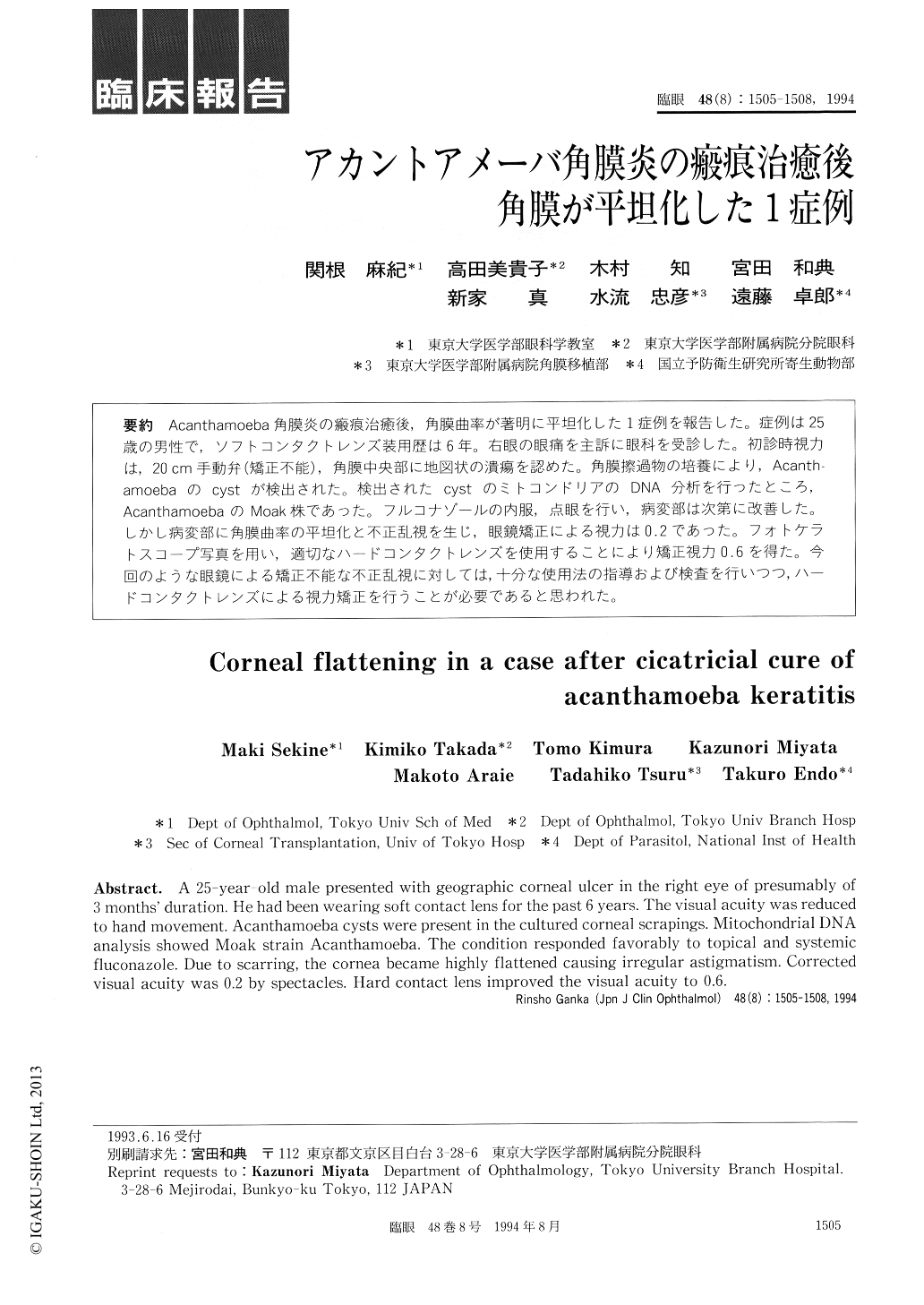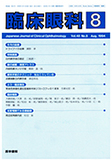Japanese
English
- 有料閲覧
- Abstract 文献概要
- 1ページ目 Look Inside
Acanthamoeba角膜炎の瘢痕治癒後,角膜曲率が著明に平坦化した1症例を報告した。症例は25歳の男性で,ソフトコンタクトレンズ装用歴は6年。右眼の眼痛を主訴に眼科を受診した。初診時視力は,20cm手動弁(矯正不能),角膜中央部に地図状の潰瘍を認めた。角膜擦過物の培養により,Acanth—amoebaのcystが検出された。検出されたcystのミトコンドリアのDNA分析を行ったところ,AcanthamoebaのMoak株であった。フルコナゾールの内服,点眼を行い,病変部は次第に改善した。しかし病変部に角膜曲率の平坦化と不正乱視を生じ,眼鏡矯正による視力は0.2であった。フォトケラトスコープ写真を用い,適切なハードコンタクトレンズを使用することにより矯正視力0.6を得た。今回のような眼鏡による矯正不能な不正乱視に対しては,十分な使用法の指導および検査を行いつつ,ハードコンタクトレンズによる視力矯正を行うことが必要であると思われた。
A 25-year-old male presented with geographic corneal ulcer in the right eye of presumably of 3 months' duration. He had been wearing soft contact lens for the past 6 years. The visual acuity was reduced to hand movement. Acanthamoeba cysts were present in the cultured corneal scrapings. Mitochondrial DNA analysis showed Moak strain Acanthamoeba. The condition responded favorably to topical and systemic fluconazole. Due to scarring, the cornea became highly flattened causing irregular astigmatism. Corrected visual acuity was 0.2 by spectacles. Hard contact lens improved the visual acuity to 0.6.

Copyright © 1994, Igaku-Shoin Ltd. All rights reserved.


